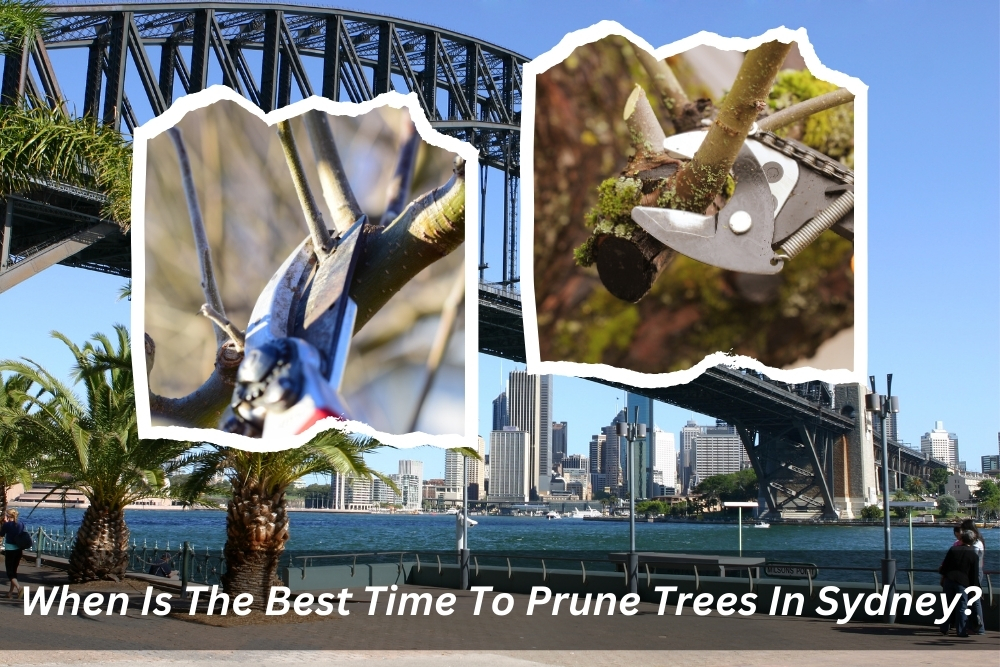Discovering the best time to prune trees is akin to unlocking the secret to a flourishing garden. Just as a spa day rejuvenates the body, strategic tree pruning enhances the overall health and beauty of your outdoor space. In this guide, we’ll unravel the mysteries behind the optimal times to prune various tree species in the unique context of the Australian environment. From aesthetics to safety, understanding when to wield those pruning shears is the key to cultivating a thriving arboreal haven in your backyard.
Why prune trees?
Pruning is more than just a fancy horticultural term – it’s a vital practice for the well-being of your trees. Here’s why:
- Shape and aesthetics: It helps maintain the desired shape and appearance of trees, ensuring they complement your garden’s overall aesthetic.
- Health and growth: Regular pruning removes dead or diseased branches, allowing for improved air circulation and sunlight penetration. This, in turn, stimulates healthy growth.
- Safety: Overgrown branches can pose a threat during storms or windy conditions. Moreover, it diminishes the likelihood of branches falling, ensuring the safety of both property and individuals.
- Fruit production: Fruit-bearing trees benefit from strategic pruning, enhancing fruit quality and promoting higher yields.
What are the different types of pruning?
Tree pruning is not a one-size-fits-all endeavour. Different types of pruning cater to various needs, especially when it comes to pruning certain plants. Here are the key techniques:
- Crown Thinning: Eliminating specific branches to enhance the entry of light and promote better air circulation within the canopy of the tree.
- Crown Raising: Elevating the lower branches to provide clearance for pedestrians, vehicles, or structures.
- Crown Reduction: Reducing the overall size of the tree by selectively cutting back branches, often to address safety concerns or accommodate nearby structures.
- Deadwooding: Removing dead or decaying branches to prevent potential hazards and enhance the tree’s overall health.
- Selective Pruning: Precision pruning to shape the tree while maintaining its natural form.
Which trees need pruning in Sydney?
Sydney’s diverse climate boasts an array of tree species, each with its own set of care needs. Among the common trees in the region that benefit from regular care are:
- Eucalyptus Trees: Pruning helps manage their height and prevent branch drop, a common occurrence in older eucalyptus trees.
- Jacaranda Trees: Enhancing their unique canopy and promoting vibrant spring blooms is achieved through occasional pruning.
- Bottlebrush Trees: Maintaining a compact shape and encouraging prolific flowering are the rewards of regular care for these trees.
- Gum Trees: Minimising the risk of limb failure and improving the overall tree structure are the outcomes of selective pruning for gum trees.
it’s crucial to note that each tree has its unique requirements, so understanding the specific needs of your tree is vital before picking up the pruning shears.
When is the ideal time to prune trees in Sydney?
The ideal time to prune trees is heavily influenced by Sydney’s climate, making timing a critical factor in the world of tree pruning. Generally speaking, understanding the best time to prune trees is key to maintaining their health and growth.
- Winter months (June to August): Ideal for most deciduous trees as they are dormant during this period, minimising stress.
- Spring (September to November): Suitable for flowering trees after the blooming season to shape and maintain their structure.
- Summer (December to February): Prune fruit trees in early summer to encourage new growth and enhance fruit production.
- Autumn (March to May): A good time for general maintenance pruning, but avoid heavy pruning as it may stimulate new growth before winter.
What tools and techniques do you need for tree pruning?
Having the right tools and knowing how to use them is crucial for effective tree pruning. Here’s a quick list:
- Pruning shears: Ideal for small branches and precision pruning.
- Loppers: For larger branches that pruning shears can’t handle.
- Pruning saw: Essential for removing thicker branches.
- Pole pruner: Useful for reaching high branches without the need for a ladder.
- Safety gear: Always wear gloves, safety glasses, and a helmet, especially when working with larger trees.
What precautions should you take while pruning trees?
Caring for your green companions by giving them a trim is indeed advantageous, but it comes with its share of risks. To ensure your safety, here’s a guide on essential precautions:
- Weather awareness: Refrain from undertaking pruning tasks during windy or stormy conditions. This precautionary measure significantly reduces the risk of accidents and ensures a safer pruning experience.
- Tool inspection: Before you commence, take a moment to inspect your tools. Confirm that they are sharp and in optimal condition. This not only facilitates clean cuts but also minimises stress on the tree, promoting its overall health.
- Safety first: Equip yourself with the right gear to create a shield against potential hazards. Gloves, safety glasses, and a helmet act as a protective barrier, safeguarding you from falling debris and other unforeseen dangers.
- Assess your capability: Understanding your limitations is crucial. When dealing with extensive pruning tasks or trees near power lines, it’s prudent to consider enlisting the expertise of a professional. Their know-how and experience can make a significant difference in both safety and the well-being of your trees.
Should you hire a professional tree pruner in Sydney?
While a bit of DIY spirit is admirable, some situations call for the expertise of a professional tree pruner. Consider hiring a pro:
- Large trees: If your tree is substantial, with branches out of reach, a professional can safely handle the task.
- Proximity to power lines: Trees near power lines pose a significant risk. Professional arborists are trained to handle these situations safely.
- Diseased trees: If your tree shows signs of disease, a professional can assess and provide the best course of action.
- Complex pruning needs: For intricate shaping or intricate pruning needs, a professional’s skill is invaluable.
Conclusion
Pruning trees is an art form that, when done right, transforms your backyard into a green haven. By understanding the unique needs of different trees, the best time to prune, and when to call in the professionals, you’ll ensure your leafy companions stand tall and proud, thriving in the Australian landscape. So, grab your pruning shears, put on your sun hat, and give your trees the TLC they deserve. Happy pruning!
Transform Your Garden with A1 Gardening & Landscaping Sydney!
Ready to turn your newfound knowledge of tree pruning into a lush reality? A1 Gardening & Landscaping Sydney is here to make your garden dreams come true. Our team of skilled professionals understands the unique needs of Sydney’s trees and landscapes, ensuring a tailored approach to tree pruning that aligns perfectly with the insights shared in this article.
Don’t let your garden be a mere spectator in the changing seasons—let it stand out as a thriving testament to your care and attention. Whether it’s shaping the canopies of your Jacaranda trees for a burst of spring colour or ensuring your Eucalyptus trees stand tall and safe, we’ve got you covered.
Take the next step towards a vibrant and flourishing garden. Contact us today for professional tree pruning that goes beyond the ordinary. Let your garden become the envy of the neighbourhood!
Transform your green space with A1 Gardening & Landscaping Sydney – where expertise meets excellence!

